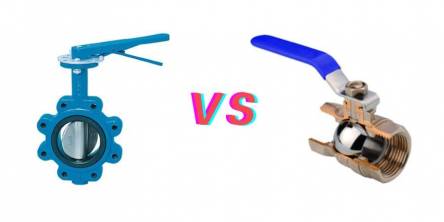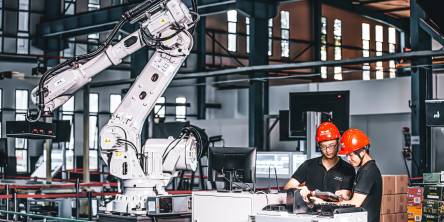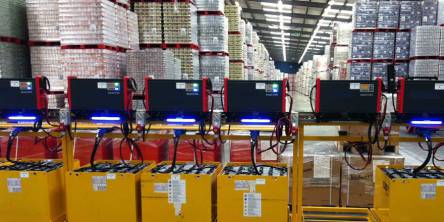Navigating Lean Manufacturing: A Simplified Blueprint for Operational Excellence
Many companies love Lean Manufacturing because it makes things better. It boosts productivity, makes quality top-notch, and saves money while speeding up production. Lean Manufacturing isn't a strict set of rules; think of it as an intelligent way of thinking. It's all about cutting out unnecessary stuff (the "8 wastes") and focusing on what customers want.
But here's the twist – the unified Lean Manufacturing model. It's not just a model; it's the key to unraveling the magic, simplifying the journey, and transforming Lean Manufacturing from a complex notion into a straightforward and effective strategy for operational success.
But here's the tricky part – people talk about Lean Manufacturing in many different ways, which can get confusing. With this simpler version, people can easily understand Lean principles and see how important individuals are.
The Lean Manufacturing Challenge:
Here are some key challenges people often face.
● Blurred Principles:
● Multiple Lean Manufacturing models exist but need clarification.
● Principles overlap, differ in detail, or use unfamiliar terms.
● Overlooking the Human Factor:
● Many models focus on technical aspects, sidelining the importance of people.
● The human touch is crucial, yet it's only sometimes explicitly addressed.
● Tool Confusion:
● Various tools and methods are described, adding to the complexity.
● Readers, especially newcomers, may need help to grasp when and where to apply these tools.
● Expertise Overload:
● Lean Manufacturing can seem like a complicated science, especially for those new to it.
● There's a risk of feeling lost in the sea of information, making it seem confined to Lean experts.
To address these challenges, a modernized Lean Manufacturing model was introduced, aiming to simplify complexities and offer a clearer understanding of Lean principles. It puts people at the center, simplifying the process and offering a more precise understanding by blending various concepts.
The Unified Model:
It rely on three main models: the "TPS house" (Toyota Production System), "Lean thinking," and "Toyota Way 2001."
Let's break them down:
● "TPS House" (Toyota Production System):
● This model is like the foundation of Lean Manufacturing pioneered by Toyota.
● It outlines the core principles and practices for efficient production.
● "Lean Thinking":
● This model emphasizes a mindset of continuous improvement and efficiency.
● It focuses on eliminating waste and optimizing processes to enhance overall performance.
● "Toyota Way 2001":
● Developed by Toyota, this model provides a comprehensive approach to Lean Manufacturing.
● It encompasses continuous improvement, respect for people, and a commitment to excellence.
Together, these models form a toolkit for understanding and implementing Lean Manufacturing principles.
Breaking Down Lean Manufacturing with Unified Model:
1. Identify Value:
Let's start at the beginning – understanding what the customer truly values. The unified model keeps it simple using tools like Critical Quality characteristics (CTQ) and Quality Function Deployment (QFD). It's about pinpointing what really matters.
2. Map Value Stream:
Navigating the complicated waters of value streams becomes straightforward with the "design, map, measure, optimize" approach. The unified model examines the seven wastes, implements Design for Manufacturing and Assembly (DFMA), and optimizes the factory layout for maximum efficiency.
3. Create Flow:
Smooth sailing through production without unnecessary waste is the goal. To make it happen, the unified model uses principles like Jidoka, Heijunka, Standardized Work, the 5S, SMED, and Total Productive Maintenance (TPM).
4. Establish Pull:
Think of it as ordering just what you need when needed. The unified model simplify the concept of a pull production system with the Kanban system, reducing work-in-progress and aligning production with demand.
5. Continuous Improvement:
Here's where the magic happens – the commitment to getting better. Challenges, Kaizen (continuous improvement), and Genchi genbutsu (going to the source) keep the momentum.
The Heart of Lean Manufacturing: Valuing People
In Lean Manufacturing, there's something super important called "Respect for people." It's not a complicated step or rule; it's the core, the soul of Lean production.
According to Toyota, this respect has two sides:
● Respect:
● It's about treating others well, trying to understand each other, and taking responsibility to build trust.
● Teamwork:
● Here, it's all about helping each other grow, sharing development opportunities, and making sure everyone in the team performs their best.
These ideas sound different from what we usually think about respect. For Toyota, it means seeing each person as responsible and capable of solving problems and contributing to the team. If someone does a good job and adds value to the team, they get respected. And don't worry, the more personal and "human" side is also there – treating every worker as an individual is critical.
A Clear Path to Operational Excellence:
To wrap it up, in the simplified Lean Manufacturing model, the idea of respect means something special. It's not just thinking about people; it's putting them at the center, making them super important to how Lean Manufacturing works. In simple terms, it's like saying people aren't just considered; they're the heartbeat of Lean Manufacturing.
Similar Articles
When comparing flow control solutions, you may encounter the decision between manual butterfly valves and ball valves. Both types offer distinct advantages and play critical roles in various applications.
Whether you’re a business owner, a supplier, a client, or just an admirer of the oil industry, there’s one thing you have to admit - this industry is among the most interesting ones in the world, and it’s getting more and more interesting every single year
Although the terms "laser engraver" and "laser cutter" are often used in the same context, there are a few differences between them. People have a huge misconception regarding the functions of both terms. In the present world scenario, laser machines can cut as well as engrave single-handedly.
The manufacturing industry, much like a lot of other industries worldwide, has been subjected to a whole lot of changes over the past few years. The cause? Lots of them but primarily the rapid evolution of technology.
The metal industry implies a diverse range of processes, skills and tools to manufacture parts, objects and even large scale structures. With the emergence of modern metalworking tools, a product receives a high level of uniformity and specificity.
In this modern world, all new types of technologies are invented for the benefit of human beings. There are many new things that are used in both commercial and military purposes, and one of the examples is aerospace fasteners. The use of this technology has increased with the invention of the fasteners.
The concept of automating a warehouse has been in place for several years. There is an increased demand for an automated warehouse in recent years due to various reasons. The costs of land and labor have gone up, companies are handling huge deliveries, and consumer expectations are high.
To stay competitive in today’s world, you need to develop technologies that cause less environmental damage. Leading forklift charger manufacturers are then launching a larger number of environmentally-friendly trucks that provide the same efficiency to fulfill their customer’s requirements.
Bend test machines are normally worldwide testing machines particularly arranged to examine bend strength, material ductility, fracture power, and toughness to fracture. Bend tests incline to be related to yielding metal and metals products. Bend test device and test methods are the same as flexure test gear.






6b16.jpg)


